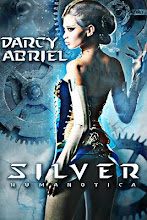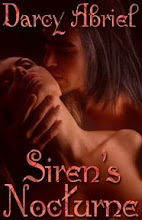
Ah, evening is upon me and day is dwindling away. This then is my virgin post. I learned some very interesting things as I was researching the subject of demons for my story
Siren's Nocturne. Well, actually, I believe it was the other way around. I was researching demons which breathed life into
Siren's Nocturne. Much fodder for many stories.
Demons--presently associated with evil, but before Christianity and in other cultures, demons were in the past and currently are, neither necessarily good or evil. There are a wide range of demons, both good and bad--just as there are humans.
Penetrating deeper into my subject,the word demon means "replete with wisdom." The Greek term
daimon means "divine power," "fate," or "god."
A male demon is called an incubus, and incubi are certainly notorious for being extremely well hung. Probably part of the reason they are such delicious fodder for erotic stories. And then there's the dark, mysteriously passionate adventure, piercing into the seductive unknown that titillates many people, I think.
There are also many legends through history about fallen angels, particularly those known as the Grigori. Interpretation lends itself to the belief that some of these fallen angels are beings who have become distanced the farthest from God. Angels who became watchers--considered by some as a separate tribe of angels--and in human form very corruptible to the sins of the flesh--a lusty tenth choir of angels. This tenth choir, more human in form than not because of their close proximity to earth, and "physically intact," unlike many of their kind, are more than able to succumb to the seductive lure of tantalizing flesh.
And let's not forget the "Harlots of Hell" or Succubae--the female demons. More particularly, the first bride of Hell--the lethal, mysterious, and seductive Lilith, thought to have gone by many names in order to seduce her victims. Men did run for the hills when the name of Lilith and her followers was invoked.

In one sense these beings are considered to be a type of god with their divine powers. Another interpretation is that demons are intermediaries between men and gods, maybe a form of demi-god.
In the first hierarchy of demons resides the demon, Asmodeus, considered one of the demons of lust, some say of impurity. His association with lust may stem from the belief that he is a child born of the Hell-queen herself, Lilith. A Persian demon, he is also believed to be the demon in control of gaming houses.
In the second hierarchy of demons resides the demon Rosier, formerly believed to be a lesser-ranked angel, a demon of lasciviousness.
Friar Francesco Mario Buazzo, in the early 1600's divided demons into types: fire demons, aerial demons, terrestrial demons, aqueous demons, subterranean demons, heliophobic (only coming at night) demons. Possibly the heliophobic demons relate to the association with vampires.
Alphonse de Spina notes that there are ten species of demons, among them incubi and succubi, who stimulate lust and perversion.
Then there is the text at Project Gutenberg on
Elizabethan Demonology which is an essay by Thomas Alfred Spalding, LL.B. (1880) that appears to indicate a very close association between fairies and demons and the powers they both possess.
So, as we see, it can be a very complicated subject, with varying interpretations on the subject of demonology and angelology.
In
Siren's Nocturne, you will need to decide for yourself--Is Etienne good or is he bad?Or is he just a seductive demon trying to live his life? And find his mate. Will Lucille made the right choice in the end? And then one might consider, is it the right choice for you? Or for her?
wishing you passionate nocturnal whisperings,
DarcyAdditional sources:
A Dictionary of Angels Including the Fallen Angels by Gustav Davidson (c. 1967)
Angels, An Endangered Species by Malcolm Godwin (c. 1990)
The Encyclopedia of Witches and Witchcraft by Rosemary Ellen Guiley (c.1989)

 a province of the land of the dead, called Niflheim, which dominion would now be hers to rule.
a province of the land of the dead, called Niflheim, which dominion would now be hers to rule. Niflheim is also a place of spells and magic, where dreams can be interpreted and the dead summoned. And Hel's province within the land of Niflheim is called Helheim, and her particular dwelling place or hall, Éljúðnir--home of the dead.
Niflheim is also a place of spells and magic, where dreams can be interpreted and the dead summoned. And Hel's province within the land of Niflheim is called Helheim, and her particular dwelling place or hall, Éljúðnir--home of the dead.













